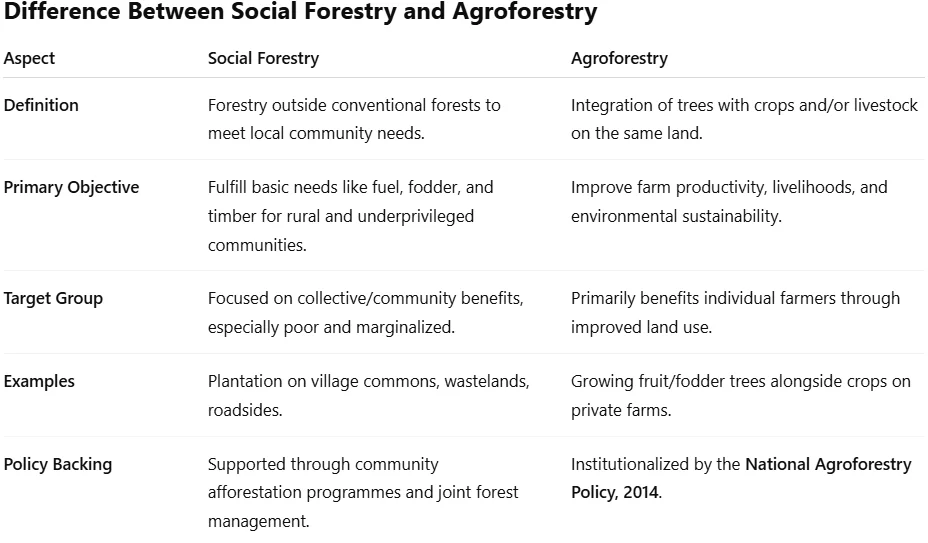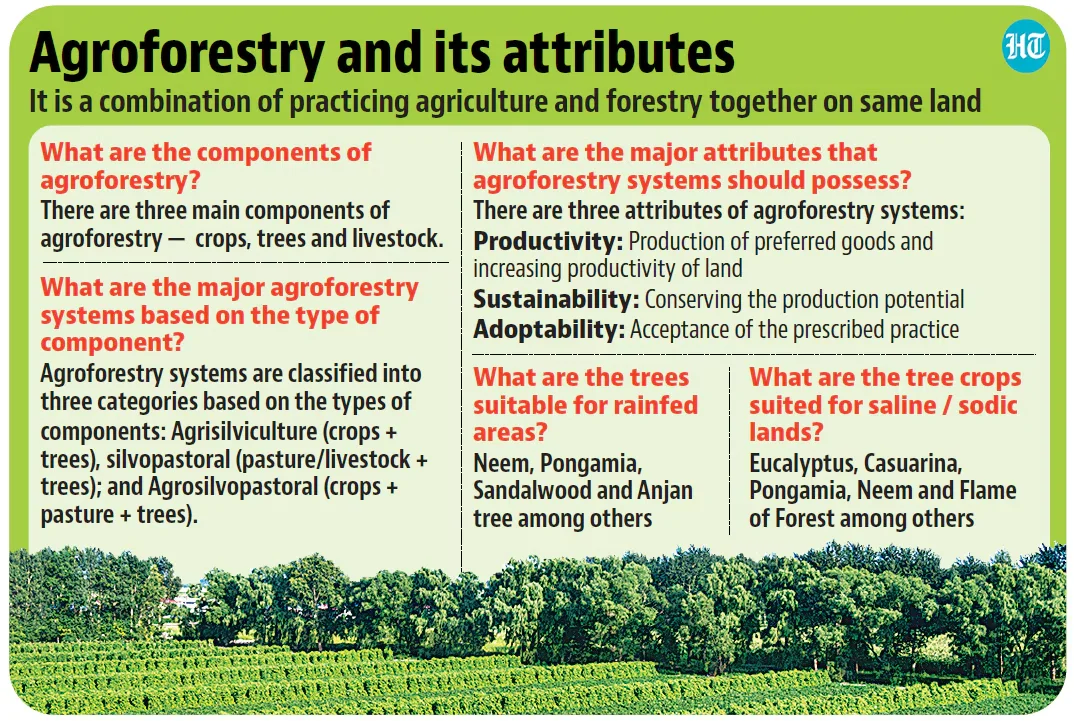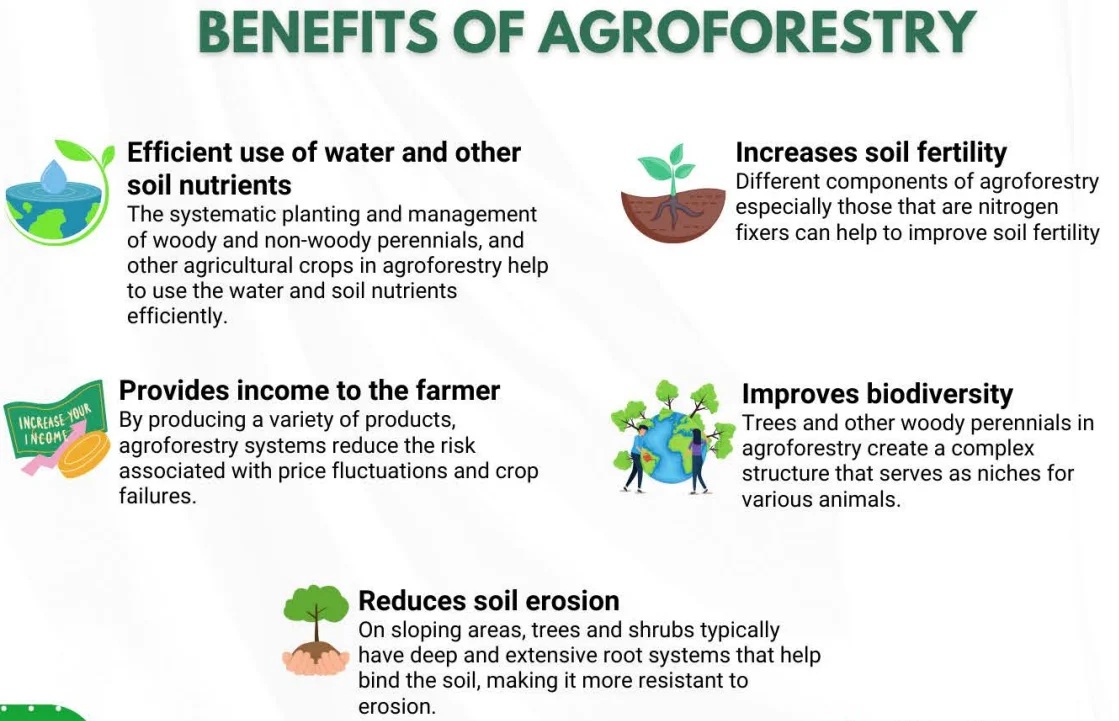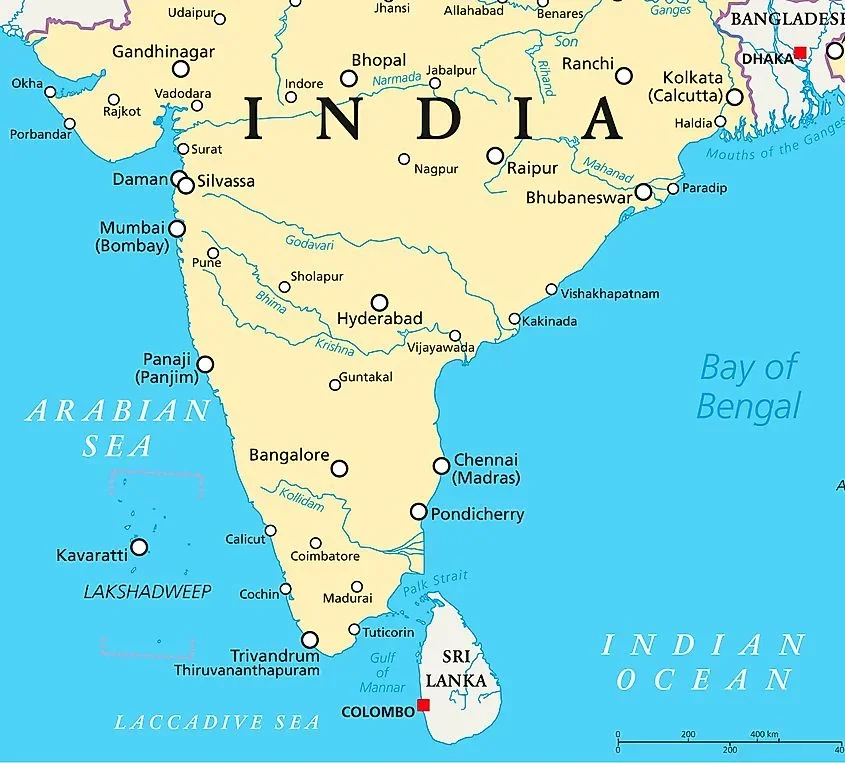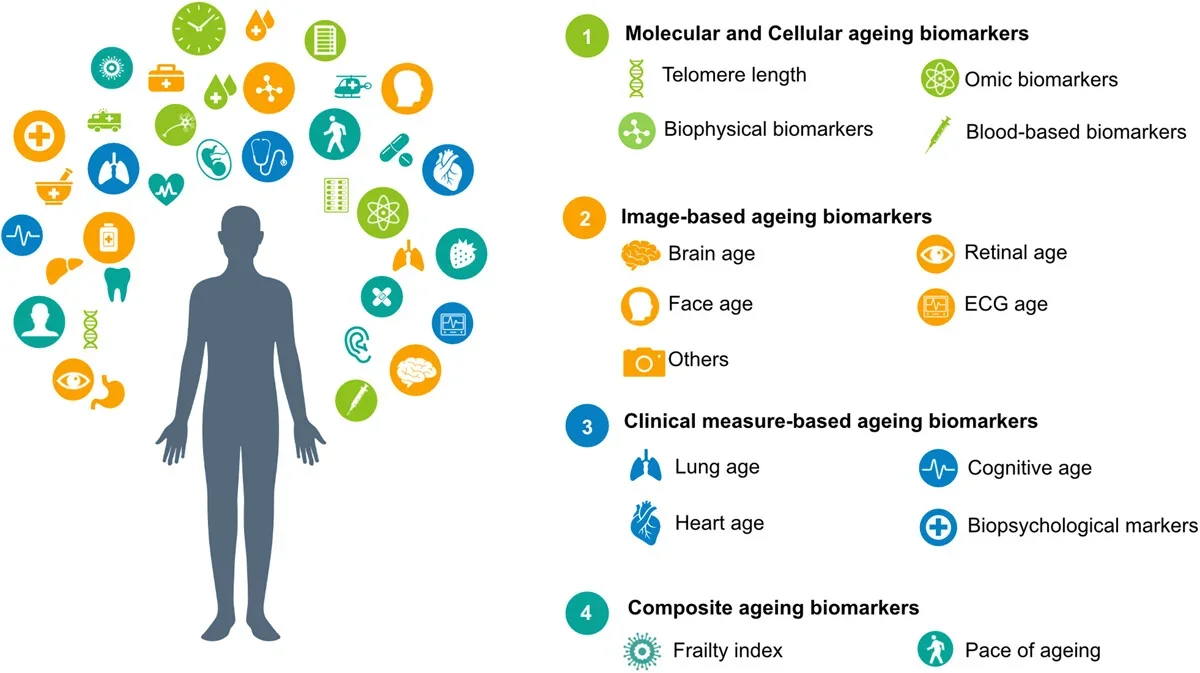Governance
Custodial Torture in India
For Prelims: Scheduled Castes (SCs), Article 21, Article 20(1), Article 20(3), Universal Declaration of Human Rights (UDHR), International Covenant on Civil and Political Rights, International Covenant on Economic, Social and Cultural Rights, UNCAT, NHRC.
For Mains: Situation of custodial torture in India, Measures needed to prevent custodial torture.
Why in News?
The custodial death in Tamil Nadu has once again brought the issue of custodial torture into the spotlight.
What is Custodial Torture?
- About: Custodial torture refers to the infliction of physical or mental suffering on individuals held in police or other authorities.
- It represents a serious violation of human rights and dignity and frequently results in custodial deaths—fatalities that occur while a person is under custody.
- Types of Custodial Torture:
- Physical Torture: Beatings, electric shocks, suffocation, sexual violence, forced stress positions, and denial of medical care.
- Psychological Torture: Threats, humiliation, sleep deprivation, solitary confinement, and mock executions.
- Coercing detainees into admitting crimes through extreme duress.
- Custodial Torture in India:
- Custodial Deaths: Between 2016 and 2022, Tamil Nadu (highest among southern states) reported 490 custodial deaths, while the national total stood at 11,656. Uttar Pradesh recorded the highest number with 2,630 deaths.
- Abuse of Preventive Detention Law: In 2022, Tamil Nadu detained 2,129 people under preventive laws, accounting for half of India’s total.
- Scheduled Castes (SCs) faced disproportionate custodial violence, making up 38.5% of detainees despite being only 20% of the population in Tamil Nadu.
What are the Constitutional and Legal Safeguards in Place Against Custodial Torture?
Constitutional Provisions
- Article 14: Article 14 ensures equality before the law, affirming that no one, including law enforcement agencies or officials, is above the law.
- Article 21: Article 21 guarantees the right to life and personal liberty, which includes the freedom from torture and other cruel, inhuman, or degrading treatment or punishment.
- Article 20(1): Article 20(1) states that no person can be convicted for an act that was not an offence under the law at the time it was committed, thereby prohibiting excessive or retrospective punishment.
- Article 20(3): Article 20(3) protects an individual from being compelled to self-incriminate, safeguarding the accused from coerced or forced confessions through torture or pressure.
Legal Provisions
- Section 120 of Bharatiya Nyaya Sanhita (2023): It penalizes those who intentionally cause hurt or grievous hurt to extract confessions, information, through violence or coercion.
- Section 35 of Bharatiya Nagarik Suraksha Sanhita (BNSS, 2023): It mandates that arrests and detentions follow valid reasons, documented procedures.
- Section 22 of Bharatiya Sakshya Adhiniyam (2023): It invalidates confessions made under inducement, threat, coercion, or promise.
International Provisions
- United Nation Charter, 1945: It mandates that prisoners be treated with dignity, affirming that their fundamental rights and freedoms remain protected under the International Covenant on Civil and Political Rights (ICCPR-India is a signatory).
- Universal Declaration of Human Rights (1948): It protects individuals from torture, cruel treatment, and enforced disappearances, ensuring the right to dignity and security.
| Click Here to Read: UN Convention against Torture and Other Cruel, Inhuman or Degrading Treatment or Punishment (UNCAT), 1984 |
What are the Challenges in Curbing Custodial Torture?
- Lack of Specific Anti-Torture Legislation: India signed the UN Convention Against Torture (UNCAT) in 1997 but has not yet ratified it.
- While torture is indirectly addressed in laws like the Protection of Human Rights Act, 1993, there is no standalone law criminalizing it, making existing provisions vague, inadequate, and lacking stringent penalties.
- Weak Enforcement & Impunity: Between 2017 and 2022, out of 345 judicial inquiries into custodial deaths, there were 123 arrests and 79 chargesheets, but zero convictions.
- In 74 human rights violation cases involving illegal detention, torture, or deaths, only 3 convictions were recorded against the police.
- Overburdened Institutions: Human Rights Commissions (NHRC/SHRCs) lack binding powers and depend on government funding, limiting their effectiveness.
- Prison overcrowding (at 130% capacity) and lack of independent oversight—with no effective police complaints authority in many states—create conditions that facilitate abuse and inhuman treatment.
- Fear of Reprisal Among Victims: Victims often refrain from reporting torture due to fear of retaliation, lack of legal aid, and threats when filing complaints.
- Marginalized groups (Dalits, minorities, tribals) are especially vulnerable due to inadequate victim protection and compensation mechanisms.
- Judicial and Systemic Failures: Lengthy judicial proceedings, compounded by overburdened courts, witness intimidation, and inadequate fast-track courts, delay justice in custodial death cases.
- Additionally, poor compliance with the D.K. Basu Guidelines (1996)—mandating arrest memos, medical exams, and legal access, along with ineffective magisterial inquiries, reflects a systemic failure and a lack of political will to enforce accountability or reform policing practices.
Key Recommendations to Prevent Custodial Torture
- Law Commission of India: In its 273rd Report (2017), the Law Commission of India recommended ratification of UNCAT 1984, and enact a specific law to implement its provisions, highlighting the urgent need to criminalize torture.
- The Commission also submitted a draft Prevention of Torture Bill, 2017 for the government's consideration.
- Judicial Ruling:
- DK Basu vs State of West Bengal Case, 1997: It laid down guidelines to prevent custodial torture and promote transparency in arrests and detentions.
- It affirmed that while police have the right to investigate, they are prohibited from using third-degree methods, and in cases of custodial violence by public servants, the State is also held accountable.
- State of Uttar Pradesh vs Ram Sagar Yadav Case, 1985: In incidents of custodial torture, the responsibility to prove innocence rests with the concerned police officer.
- Nambi Narayanan Case, 2018: It emphasized the severe psychological impact resulting from wrongful prosecution and custodial abuse.
- DK Basu vs State of West Bengal Case, 1997: It laid down guidelines to prevent custodial torture and promote transparency in arrests and detentions.
- National Human Rights Commission (NHRC): The NHRC recommended that District Magistrates and Superintendents of Police must report any incidents of custodial torture to the Secretary General within 24 hours.
- Failure to comply may be viewed as an attempt to conceal or suppress the incident.
What Measures can be taken to Address Custodial Torture in India?
- Strengthen Legal Framework: Enact a comprehensive Prevention of Torture law with clear punitive provisions and victim compensation, in alignment with UNCAT standards.
- India should also ratify UNCAT to reinforce its international commitment to ending torture.
- Ensure Institutional Accountability: Take swift and transparent action against police personnel involved in custodial torture. Set up specialized district-level units to handle cases involving police custody and sensitive interrogations.
- Reform Policing Structure: Separate the functions of law enforcement and investigation within the police to reduce conflicts of interest and minimize instances of custodial abuse.
- Introduce human rights training for police on lawful interrogation methods and the consequences of torture. Equip judicial magistrates with training on fair remand practices and natural justice principles.
- Independent Oversight: Mandate judicial magistrates to supervise custodial procedures and investigations. Establish independent investigative bodies to handle complaints of custodial torture and deaths, ensuring unbiased accountability.
Conclusion
Custodial torture remains a grave human rights violation in India, exacerbated by legal gaps, institutional impunity, and systemic failures. Strengthening laws (BNS/BNSS reforms, UNCAT ratification), ensuring independent oversight, and police accountability are critical to ending this menace. Without urgent action, custodial deaths and torture will persist unchecked.
|
Drishti Mains Question: "Despite constitutional safeguards, custodial torture persists in India due to institutional impunity." Critically analyze this statement and suggest reforms. |
UPSC Civil Services Examination, Previous Year Question (PYQ)
Mains
Q. Though the Human Rights Commissions have contributed immensely to the protection of human rights in India, yet they have failed to assert themselves against the mighty and powerful. Analysing their structural and practical limitations, suggest remedial measures. (2021)
Q. National Human Rights Commission (NHRC) in India can be most effective when its tasks are adequately supported by other mechanisms that ensure the accountability of a government. In light of the above observation, assess the role of NHRC as an effective complement to the judiciary and other institutions in promoting and protecting human rights standards. (2014)
Economy
Rules for Promotion of Agroforestry
For Prelims: Agroforestry, Climate Change, Carbon Sequestration, Land Degradation Neutrality by 2030, Sustainable Farming, Sub-Mission On Agroforestry (SMAF), National Agroforestry Policy (NAP)
For Mains: Agroforestry- Model Rules, Significance and Challenges
Why in News?
The Ministry of Environment, Forest and Climate Change (MoEFCC) has issued Model Rules for Felling of Trees on Agricultural Lands to streamline permissions, promote agroforestry, boost rural incomes, and reduce pressure on natural forests.
- The rules mandate a digital portal with remote sensing and image recognition for transparency and monitoring. This aligns with India’s commitments under UNFCCC, CBD, and supports SDGs 2, 13, and 15.
What are the Key Highlights of Model Rules by MoEFCC for Promoting Agroforestry?
- Simplified Regulations: Uniform procedures for tree registration, felling, and timber transit on agricultural lands; overrides conflicting state rules for legal clarity.
- NTMS Portal: Centralized National Timber Management System (NTMS) enables farmers to register plantations, apply for felling permits, and track applications using geo-tagged data, KML files, and photos.
- Tree-Based Categorization: Felling of more than 10 trees requires physical verification by empanelled agencies, while 10 or fewer trees can be self-declared by farmers on the NTMS portal for an automated NOC.
- Institutional Mechanism:
- State Level Committee (SLC) under 2016 Wood-Based Industries Guidelines to promote agroforestry.
- Divisional Forest Officers (DFOs) to supervise empanelled agencies for compliance.
- Technology-Driven Monitoring: Use of remote sensing, image recognition, and digital tools for real-time monitoring and transparency.
- Market Linkages: Encourages use of locally sourced timber, reducing imports. Promotes cultivation of high-value species (e.g., teak, eucalyptus, poplar) to boost farmer income.
What is Agroforestry?
- About: Agroforestry (agriculture with trees), is a land-use system where trees are grown together with crops and/or livestock on the same land to improve farm productivity, livelihoods, and environmental sustainability.
- By combining trees with agriculture, it ensures better use of land and supports rural livelihoods in an eco-friendly way.
- Agroforestry was formally promoted in India through the National Agroforestry Policy, 2014.
- In India, agroforestry covers 28.4 million hectares, which is 8.65% of the country’s total land area.
- Components:
- Trees on farms and in agricultural landscapes, providing fodder, fuel, timber, fruits, or income.
- Tree-crop combinations like cocoa, coffee, oil palm, and rubber.
- Farming in or near forests, helping manage land near forest edges sustainably.
- Types of Agroforestry:
- Farm Forestry: Tree cultivation by farmers on their own land, often for commercial purposes.
- Promoted by National Commission on Agriculture (NCA) (1976) to integrate forestry with farm operations.
- Extension Forestry: Raising trees in non-forested, degraded areas to expand green cover.
- Mixed Forestry: Combines fuelwood, fodder, and fruit trees on wastelands or village commons.
- Shelterbelts: Rows of trees/shrubs to protect against wind, sun, and soil erosion.
- Linear Strip Plantations: Fast-growing trees planted along roads, canals, and railway lines.
- Farm Forestry: Tree cultivation by farmers on their own land, often for commercial purposes.
What are the Key Benefits of Agroforestry?
- Economic Contribution: Agroforestry meets nearly half of India’s fuelwood needs, two-thirds of small timber demand, 60% of raw material for paper pulp, and around 9–11% of green fodder demand.
- It supports rural livelihoods through diverse products like fruit, fodder, fuel, fibre, fertiliser, and timber, enhancing income, food security, and resilience to crop failure.
- Environmental Benefits:
- Carbon Sequestration & Climate Mitigation: Agroforestry, with adequate support, can sequester over 2.5 billion tonnes of CO₂-equivalent by 2030. Integrated Afforestation, Reforestation, and Revegetation (ARR) projects further enhance its role as a carbon sink, supporting land restoration and climate resilience, contributing to India’s net-zero target by 2070.
- Improved Soil Fertility: Nitrogen fixing trees grown in the agro forestry systems are capable of fixing about 50 -100 Kg N/ha/year. Leaf litter decomposition forms humus, recycles nutrients, and improves soil health, reducing the need for chemical fertilisers and supporting organic farming.
- Ecological Sustainability: Agroforestry improves soil health, water retention, nutrient cycling, and biodiversity, reducing dependency on agrochemicals.
- It also aids in integrated pest management by hosting diverse species that naturally regulate pests, while enhancing climate resilience through ecological stability.
- Support for Global Commitments: Agroforestry contributes to India’s international targets like creating an additional carbon sink of 2.5–3 billion tonnes of CO₂-equivalent by 2030 and achieving Land Degradation Neutrality over 26 million hectares.
- It also aligns with 9 out of 17 Sustainable Development Goals (SDGs).
- Renewable Energy Promotion: Agroforestry supports the generation of sustainable biomass-based energy, contributing to clean and renewable energy goals.
What are the Key Government Initiatives on Agroforestry?
- National Agroforestry Policy (NAP), 2014: India became the first country to adopt a dedicated agroforestry policy, promoting integrated agriculture–forestry systems on private and community lands.
- It called for ministerial convergence, simplified felling and transit rules, institutional support (e.g., CAFRI), and research–extension linkages.
- The policy laid the foundation for the Sub-Mission on Agroforestry (SMAF) and inspired similar policies in ASEAN, Rwanda, Nepal, and Ethiopia.
- Sub-Mission on Agroforestry (SMAF), 2016: Launched under the National Mission for Sustainable Agriculture (NMSA), SMAF aims to promote tree plantation on farmlands, especially for small and marginal farmers, by providing incentives for seedling procurement, plantation, protection, and extension.
- All India Coordinated Research Project (AICRP), 1983: Initiated by ICAR, AICRP is a national research network focused on developing and improving agroforestry systems suited to India’s diverse agro-climatic zones.
- GROW: Launched by NITI Aayog, GROW (Greening and Restoration of Wasteland with Agroforestry) aims to restore 26 million hectares of degraded land by 2030 and contribute to India's carbon sink target of 2.5–3 billion tonnes CO₂-equivalent under the Paris Agreement.
- It uses Remote Sensing, GIS, and the Agroforestry Suitability Index (ASI) on the Bhuvan Portal to guide interventions at national, state, and district levels.
What are the Key Challenges in Effective Utilization of Agroforestry Policy?
- Regulatory & Institutional Fragmentation: Varying tree felling and transit rules across States, poor coordination among forestry, agriculture, and rural development departments hinder uniform implementation.
- Low Awareness and Technical Capacity: Farmers lack awareness of policy benefits, ecological value, and best practices.
- Shortage of trained extension staff and limited access to scientific knowledge on species selection, plantation techniques, and integrated pest management restrict adoption.
- Financial and Market Constraints: High initial investment, long gestation period, lack of insurance and agroforestry-specific credit schemes make it financially risky.
- Weak linkages with wood-based industries and absence of price assurance reduce profitability.
- Digital and Monitoring Gaps: Low digital literacy and poor connectivity limit use of the National Timber Management System (NTMS).
- Inadequate real-time monitoring affects traceability, transparency, and compliance, especially for smallholders.
- Research and Perception Barriers: Lack of region-specific R&D on tree-crop models and climate-resilient species, along with farmer risk aversion, uncertainty in returns affects confidence and large-scale adoption.
What Measures Should be Taken for Effective Implementation of Agroforestry Policy?
- Regulatory Reforms: Develop a uniform national framework for tree felling and transit rules, while strengthening coordination through fully functional State Level Committees (SLCs) to ensure consistent implementation across States.
- Awareness and Capacity Building: Launch localized awareness and training programs through KVKs, ICAR, and forest departments to educate farmers and extension workers on policy benefits, climate-resilient models, and integrated pest management.
- Financial and Market Support: Introduce agroforestry-specific credit and insurance schemes, promote public-private partnerships, and establish buy-back arrangements with wood-based industries to improve profitability and reduce financial risk.
- Digital Access and Monitoring: Expand rural digital infrastructure to enhance use of the NTMS portal, and integrate GIS, remote sensing, and AI-based tools for real-time monitoring, traceability, and compliance.
- Research and Demonstration: Invest in region-specific R&D on productive, climate-smart species and establish model agroforestry farms to showcase best practices, reduce risk perception, and build farmer confidence.
Conclusion
The Model Rules offer a transformative approach to mainstream agroforestry as a tool for climate-resilient agriculture, rural income generation, and natural resource conservation. Addressing implementation challenges through institutional coordination, digital empowerment, and market development will be crucial to realizing their full potential in India's agricultural and environmental landscape.
|
Drishti Mains Question: Agroforestry has the potential to address India’s timber needs, improve rural incomes, and promote ecological balance. Analyse the challenges in its implementation and suggest a viable roadmap. |
UPSC Civil Services Examination, Previous Year Question (PYQ)
Prelims:
Q. In the context of India’s preparation for Climate -Smart Agriculture, consider the following statements: (2021)
- The ‘Climate-Smart Village’ approach in India is a part of a project led by the Climate Change, Agriculture and Food Security (CCAFS), an international research programme.
- The project of CCAFS is carried out under Consultative Group on International Agricultural Research (CGIAR) headquartered in France.
- The International Crops Research Institute for the Semi-Arid Tropics (ICRISAT) in India is one of the CGIAR’s research centres.
Which of the statements given above are correct?
(a) 1 and 2 only
(b) 2 and 3 only
(c) 1 and 3 only
(d) 1, 2 and 3
Ans: (d)
Q. Consider the following pairs: (2014)
Programme/Project Ministry
- Drought-Prone Area Programme - Ministry of Agriculture
- Desert Development Programme - Ministry of Environment and Forests
- National Watershed Development Project for Rainfed Areas - Ministry of Rural Development
Which of the above pairs is/are correctly matched?
(a) 1 and 2 only
(b) 3 only
(c) 1, 2 and 3
(d) None
Ans: (d)
Q. In India, which of the following can be considered as public investment in agriculture? (2020)
- Fixing Minimum Support Price for agricultural produce of all crops
- Computerization of Primary Agricultural Credit Societies
- Social Capital development
- Free electricity supply to farmers
- Waiver of agricultural loans by the banking system
- Setting up of cold storage facilities by the governments
Select the correct answer using the code given below:
(a) 1, 2 and 5 only
(b) 1, 3, 4 and 5 only
(c) 2, 3 and 6 only
(d) 1, 2, 3, 4, 5 and 6
Ans: (c)
Mains
Q. Given the vulnerability of Indian agriculture to vagaries of nature, discuss the need for crop insurance and bring out the salient features of the Pradhan Mantri Fasal Bima Yojana (PMFBY). (2016)
Q. Explain various types of revolutions, took place in Agriculture after Independence in India. How have these revolutions helped in poverty alleviation and food security in India? (2017)
Facts for UPSC Mains
Blocking of AI Web Crawler
Why in News?
In a landmark move, major US and UK publishers have started blocking Artificial Intelligence (AI) web crawlers to prevent unauthorised use of their content.
- This has renewed calls in India for consent-based copyright safeguards and fair revenue sharing, raising key concerns in digital governance, copyright enforcement, and ethical AI use.
What is an AI Web Crawler?
- About: An AI web crawler is a type of automated software or bot that scans and collects content from the internet specifically to help train AI models like Large Language Models (LLMs), or to provide live information retrieval for AI assistants.
- Types:
- Model Training Crawler: Extract website data to train generative AI models.
- Examples: GPTBot (OpenAI), Amazonbot (Amazon), GoogleOther (Google).
- Live Retrieval Crawlers: These bots pull real-time data from websites to supplement pre-trained models during user queries, ensuring up-to-date and cited responses in AI search tools.
- It is used by AI platforms like Bing, ChatGPT, etc., to stay updated.
- Model Training Crawler: Extract website data to train generative AI models.
- Concerns:
- Lack of Regulatory Framework: Currently, India lacks a regulatory framework to oversee how AI companies access and use web content.
- This has led to a situation where large tech firms benefit from freely available Indian content without consent or oversight, while smaller publishers are left with no tools to monitor or restrict such access.
- Copyright Enforcement: News articles, blogs, and educational content are used to train LLMs without permission or compensation.
- India’s Copyright Act, 1957 is not equipped to address AI-specific use cases, such as derivative AI outputs or training data rights.
- There is no clear interpretation of “fair use” vs. “unlicensed training” in the Indian context.
- India has no data protection law focused on non-personal data, which LLMs mostly rely on for AI training.
- Ethical Use of AI: AI developers rarely disclose what data they use, leaving original creators without acknowledgement or reward.
- Moreover, training AI on unvetted or outdated material can introduce biases and lead to inaccurate or harmful outputs, undermining public trust in AI systems.
- These challenges underscore the urgent need for India to establish a consent-based, rights-respecting digital ecosystem.
- Lack of Regulatory Framework: Currently, India lacks a regulatory framework to oversee how AI companies access and use web content.
- Global Frameworks and India’s Path Forward: EU’s AI Act, 2024 has started addressing AI training on copyrighted data.
- US publishers are entering licensing deals or legally challenging AI firms.
- India can study these and develop an Indian model for AI governance, balancing innovation with creators' rights.
- The Ministry of Electronics and IT (MeitY) and the Ministry of Information & Broadcasting (I&B) must jointly legally define “unauthorised data scraping” and establish a consent-based AI licensing framework to protect creators’ rights.
- They should also enable technical safeguards by providing AI bot-blocking tools to Indian publishers, in collaboration with platforms like Cloudflare, to help secure digital content.
|
Drishti Mains Question: Examine the challenges posed by Artificial Intelligence (AI) web crawlers to India's copyright regime. |
UPSC Civil Services Examination, Previous Year Questions (PYQs)
Mains
Q. In a globalized world, Intellectual Property Rights assume significance and are a source of litigation. Broadly distinguish between the terms—Copyrights, Patents and Trade Secrets. (2014)
Important Facts For Prelims
50 Years of CITES
Why in News?
The Convention on International Trade in Endangered Species of Wild Fauna and Flora (CITES) completed 50 years on 1st July 2025.
Note: The United Nations General Assembly designated 3rd March as UN World Wildlife Day in 2013, to coincide with the anniversary of the signing of CITES.
What is CITES?
- About: CITES, also known as the Washington Convention, was signed on 3rd March 1973 during the World Wildlife Conference and came into force on 1st July 1975. It was drafted following a 1963 resolution adopted by the International Union for Conservation of Nature (IUCN) to regulate wildlife trade.
- The Convention now has 185 Parties, including India (a member since 1976) and the European Union.
- Administered by the UN Environment Programme (UNEP) in Geneva, CITES regulates international trade in over 40,000 species of wild animals and plants, including live specimens and wildlife-derived products.
- The treaty aims to ensure that such trade is sustainable, legal, and traceable, supporting biodiversity, local livelihoods, and national economies in line with the UN Sustainable Development Goals.
- Working Procedure: CITES regulates international trade through permits for export, import, re-export, and sea introduction. Each member country appoints management and scientific authorities to oversee licensing and conservation advice.
- Appendices System:
- Appendix I: Species threatened with extinction. Trade is highly restricted.
- Appendix II: Species not endangered but need controlled trade to avoid risk.
- Appendix III: Species protected by at least one country that seeks cooperation to regulate trade.
- Changes to Appendices I and II are decided at the Conference of the Parties (CoP), while Appendix III can be amended unilaterally by individual Parties.
- Appendices System:
- Importance: Wildlife trade is a multi-billion dollar global industry, and unregulated trade alongside habitat loss threatens many species with extinction.
- CITES is recognized as one of the most effective environmental agreements, supported by tools like the CITES Trade Database (a global reference on legal wildlife trade) and clear guidelines for enforcement and legal acquisition.
- It has helped save critically endangered species such as African elephants, pangolins, and crocodiles.
- Initiatives like the Monitoring the Illegal Killing of Elephants (MIKE) Programme have significantly reduced poaching in Africa and Asia.
- All species listed in the CITES Appendices are now included in Schedule IV of the Wild Life (Protection) Amendment Act, 2022, reflecting India’s strengthened cooperation with CITES.
- CITES is recognized as one of the most effective environmental agreements, supported by tools like the CITES Trade Database (a global reference on legal wildlife trade) and clear guidelines for enforcement and legal acquisition.
- UN and CITES: CITES complements the work of other UN entities, such as the Food and Agriculture Organization (FAO) to improve fisheries management, capacity building and technical cooperation with the Economic and Social Commission for Asia and the Pacific (ESCAP), and initiatives focusing on the youth with the UN Development Programme.
UPSC Civil Services Examination Previous Year Question (PYQ)
Q. With reference to the International Union for Conservation of Nature and Natural Resources (IUCN) and the Convention on International Trade in Endangered Species of Wild Fauna and Flora (CITES), which of the following statements is/are correct? (2015)
- IUCN is an organ of the United Nations and CITES is an international agreement between governments.
- IUCN runs thousands of field projects around the world to better manage natural environments.
- CITES is legally binding on the States that have joined it, but this Convention does not take the place of national laws.
Select the correct answer using the code given below:
(a) 1 only
(b) 2 and 3 only
(c) 1 and 3 only
(d) 1, 2 and 3
Ans: (b)
Rapid Fire
Kariyachalli Island
Tamil Nadu, under the TNSHORE (Tamil Nadu Sustainably Harnessing Ocean Resources) project, is working to protect the ecologically vital Kariyachalli Island in the Gulf of Mannar, which has shrunk by over 70% since 1969 and may be submerged by 2036.
Kariyachalli Island
- About: Kariyachalli Island, located within the Gulf of Mannar Marine National Park, is part of one of India’s four major coral reef regions (others: Gulf of Kutch, Lakshadweep, and Andaman & Nicobar Islands).
- Threats: The island has lost 70% of its landmass since 1969, and due to climate change, 30% of its coral has already bleached.
- Conservation: The TNSHORE project plans to install 8,500 artificial reef modules that are trapezoidal structures made of ferrocement and steel with perforations for nutrient flow along with seagrass plantation and coral habitat restoration, to help reduce wave energy and stabilize the shoreline.
Gulf of Mannar
- About: The Gulf of Mannar, an extended part of the Laccadive Sea, contains 21 islands and is bordered by Rameswaram, Ram Setu bridge, and Mannar Island.
- It receives rivers like the Tambraparni and Aruvi, and hosts the Tuticorin port.
- Biodiversity: Home to the Gulf of Mannar Marine National Park—South Asia’s first Marine Biosphere Reserve—it supports corals, fishes, and endangered species like dugongs, whale sharks, and sea turtles.
- The gulf is noted for its pearl banks and sacred chank (a gastropod mollusk).
- Gulf of Mannar Marine National Park: Established in 1982, it features coral reefs, mangroves, mudflats, creeks, seagrass beds, seaweeds, estuaries, sandy shores, saline grasslands, marshes, and rocky coastlines.
| Read More: Coral Breach in Gulf of Mannar |
Rapid Fire
BHARAT Study: Mapping Healthy Ageing Biomarkers
The Indian Institute of Science, under the Longevity India Programme, has launched the BHARAT (Biomarkers of Healthy Aging, Resilience, Adversity, and Transitions) study to map ageing biomarkers and build a baseline for healthy ageing specific to the Indian population.
- Ageing Complexity: Ageing varies across individuals and populations, driven by molecular, cellular, environmental, lifestyle, and socioeconomic factors, meaning chronological age may not reflect true biological age.
- Need for India-Specific Data: Current biomarkers and diagnostic standards are often based on Western biomarkers and cut-offs (like cholesterol, vitamin D, CRP levels), which may not be accurate or applicable to Indians, risking misdiagnosis and ineffective treatment.
- Despite rising life expectancy in India (now 67.3 years), there is a projected surge in age-related diseases like Parkinson’s (168% increase by 2050) and 200% rise in dementia, underscoring the need for early detection and intervention.
- Significance of Biomarkers: BHARAT aims to build a reliable “Bharat Baseline” — a reference for what constitutes normal health markers specifically for the Indian population.
- It covers a broad range of indicators, including genomic biomarkers (e.g., disease-linked mutations), proteomic and metabolic markers (reflecting biological and metabolic health), and environmental and lifestyle factors.
- The study will use AI and machine learning to analyze complex multi-dimensional datasets to predict health outcomes and design effective interventions.
| Read more: Challenges Related to Aging Population |
Rapid Fire
Garcinia Kusumae
Researchers have discovered a new species of tree, Garcinia kusumae, in Assam, enriching the region’s floral biodiversity.
- Garcinia kusumae is a newly identified species in the genus Garcinia, locally known as thoikora in Assamese.
- The Garcinia genus (family: Clusiaceae) includes 414 species globally, with 33 species and 7 varieties found in India. Assam alone hosts 12 species and 3 varieties.
- Garcinia kusumae is a dioecious evergreen tree, growing up to 18 meters, flowering from February to April, and fruiting from May to June. It differs morphologically from related species such as G. assamica, G. cowa, and G. succifolia, notably in flower structure and fruit resin characteristics.
- Ethnobotanical Significance: The fruit pulp is culturally and medicinally significant. It is used to make a sherbet to prevent heat stroke, added to curries, eaten raw with condiments, and serves as a traditional remedy for diabetes and dysentery.
| Read more: World's First Genetically Modified Rubber: Assam |

